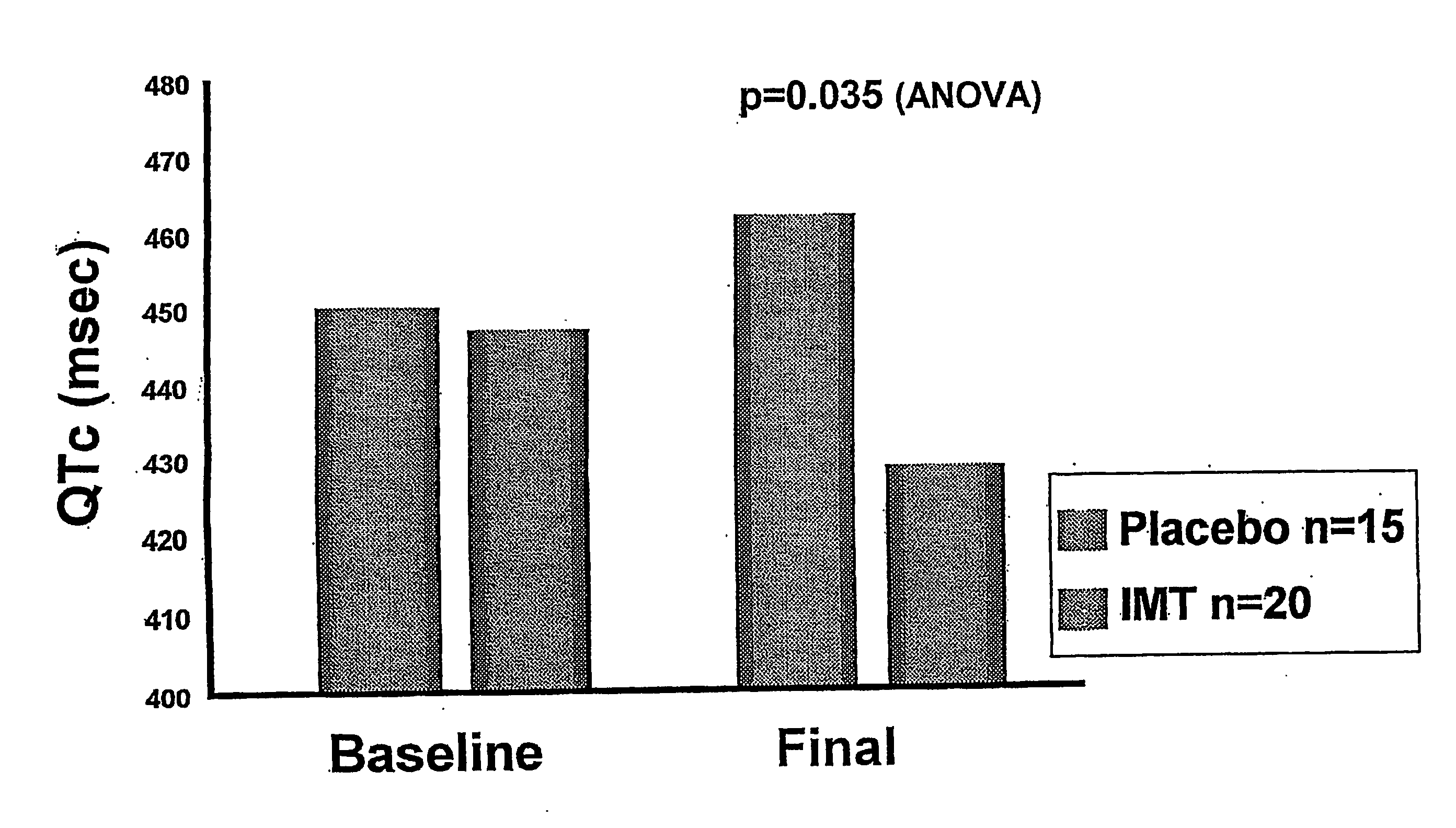Electrocardiographic aspects of chf treatment
- Summary
- Abstract
- Description
- Claims
- Application Information
AI Technical Summary
Benefits of technology
Problems solved by technology
Method used
Image
Examples
example
[0028] This example describes a clinical trial involving the treatment of a small number of human patients with advanced chronic congestive heart failure. The patients had NYHA class III-IV chronic congestive heart failure, with a left ventricular ejection fraction (LVEF) of less than 40% (mean 22%) and a 6 minute walk distance of less than 300 m. All of the patients were receiving other CHF treatments, including ACE inhibitors, β-blockers, aldosterone antagonists, digoxin, diuretics.
Protocol:
[0029] Patients received 1 injection of treated blood on each of 2 consecutive days, followed by single injections at monthly intervals commencing 14 days after their first injection, for a period of 5 months. Each injection had a volume of 10 ml. Each individual treatment comprised the following steps:
[0030] 1. Collection of 10 ml of a patient's own venous blood into 2 ml of sodium citrate for injection, USP. The sodium citrate was added to the sample to prevent the blood from coagulating ...
PUM
 Login to View More
Login to View More Abstract
Description
Claims
Application Information
 Login to View More
Login to View More - R&D
- Intellectual Property
- Life Sciences
- Materials
- Tech Scout
- Unparalleled Data Quality
- Higher Quality Content
- 60% Fewer Hallucinations
Browse by: Latest US Patents, China's latest patents, Technical Efficacy Thesaurus, Application Domain, Technology Topic, Popular Technical Reports.
© 2025 PatSnap. All rights reserved.Legal|Privacy policy|Modern Slavery Act Transparency Statement|Sitemap|About US| Contact US: help@patsnap.com


